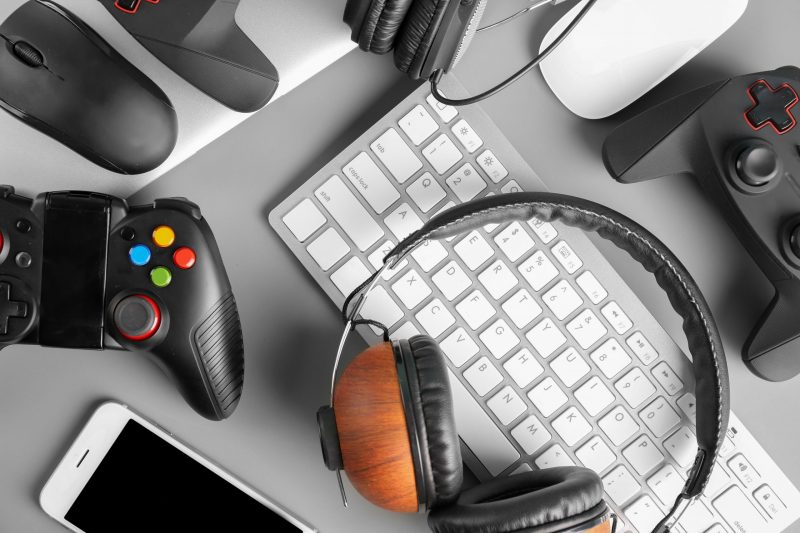We use money to buy food, clothes, gas, and other needs and wants in the real world. We earn them through hard work, and if we’re lucky, we’re rewarded with a cash incentive. We use it for everyday necessities that money (or the lack of it) can make or break a person.
Believe it or not, money exists in video games and mobile gaming apps too. They’re called virtual game money or in-game currency. It’s a way to keep you hooked in the game and, of course, keep developers earning with every transaction you make.
Virtual Game Money: Gold, Cash, Gems, Or Both
If you’re clueless about what it is, virtual game money is a digital currency that players of a specific game use to buy in-game products. Games and apps have their version of virtual game money, but they’re commonly known as “cash, coins, gold, or gems”.
Famous virtual money examples are Riot Points (League of Legends), V-Bucks (Fortnite), Gold (World of Warcraft), Project Entropia Dollar (Entropia’s Universe), Gold Coins (Ultima Online), and Robux or Roblox money.
There are also times when games have dual currencies. You can earn one type through gameplay, while the other requires purchases using real money or a credit card. Farmville, a once-popular farming game on Facebook, uses cash and gasoline as dual currencies. Players earn cash with an option to buy gasoline with real currency to continue playing or unlock additional game features.
Earn It Or Buy It
Video and mobile game players obtain virtual money in several ways. They can:
- Play the game: finish the required number of levels or accomplish specific tasks
- Pay real cash in exchange for in-game coins or gems
- Receive it as a gift from fellow players
- Win online contests such as game streams or video comments
- Find more information on how advertisements or doing surveys give free virtual money
- Buy on online sites, gaming communities, and virtual platforms
- Exchange them in virtual currency markets
Gotta Spend It
The in-game currency is used for microtransactions or to purchase downloadable content. Players use small amounts of money to buy products from a store in-game or through an external site. They can use virtual game money to buy clothing or skins for their characters and obtain items such as weapons or powers.
In-game currency can also be used to unlock additional characters, gain access to hidden game features, or purchase loot boxes that contain random items to use throughout the game. It’s also helpful in removing time-lock features so that you can play without having to wait for hours before a game level or upgrade is available.
Players can also use in-game currency to purchase items as gifts for fellow players. They can help others reach certain levels or unlock additional items when they send gifts or packages.
Lovin’ The In-Game Currency
Virtual game money allows players to get additional features to customize their characters and obtain items that can give them an advantage over other players or extend their gameplay. It also serves as a special pass to participate in pay-to-win matches.
Aside from obtaining additional features, virtual currency also serves as a reward for players’ efforts. It gives them a sense of accomplishment when they earn money and use it to unlock new experiences. It gets them hooked to the game and even encourages them to spend more.
Of course, developers have much to gain when video games and mobile games are monetized. In-game transactions increase revenue when real money is used to fund purchases. Developers make most games accessible or affordable, enticing players to spend for upgrades and unlocks and making gaming a billion-dollar industry.
The Downside of Virtual Game Money
Even if virtual game money makes video games and apps fun and exciting, it also has several drawbacks. For one, these are considered closed virtual currencies because their value is tied to the game. You cannot use or trade gems or gold for other games.
Another disadvantage is that there appears to be no single virtual money for all games. This means that you’ll need to acquire one from each game if you play different types of games.
Those seemingly small amounts can add up to hundreds or even thousands of dollars if you use cash or a credit card to purchase game enhancements. You also run the risk of wasting some coins or gems when you avail of loot boxes. For example, you buy $5 worth of 300 gems to unlock a skin worth 250 gems. You won’t be able to get the remaining 50 gems. You’ll need to spend more within the app.
Take It Or Leave It
In sum, virtual game money sustains players, developers, and the entire gaming industry. Players earn and buy virtual game money for essential upgrades to their characters and abilities. Developers benefit from in-game transactions and guaranteed revenue from continuous gameplay and purchases. While it appears advantageous for players, it, too, has a downside as it can encourage additional spending.
Whether cash, gold, gems, or coins, virtual game money can make or break a game. It’s up to the player to call the shots and use money wisely.
By Christopher Hudson
 Bio: Christopher Hudson is a game IT specialist. He is also a video gamer by hobby, sharing his expertise and experience to the online world through his helpful blog and guest posts. Christopher also loves game app designing. He spends his free time in sports and outdoor activities.
Bio: Christopher Hudson is a game IT specialist. He is also a video gamer by hobby, sharing his expertise and experience to the online world through his helpful blog and guest posts. Christopher also loves game app designing. He spends his free time in sports and outdoor activities.

